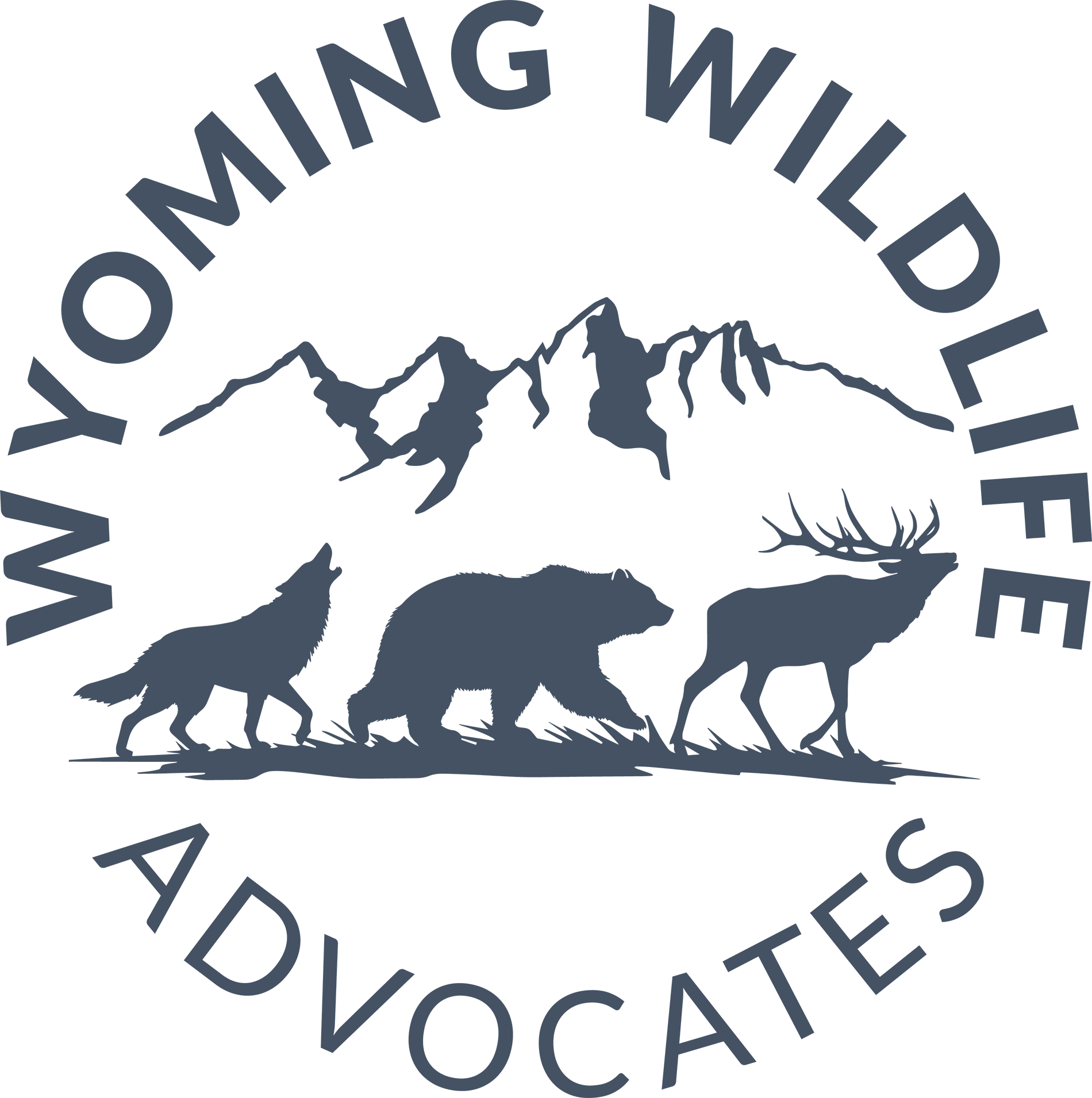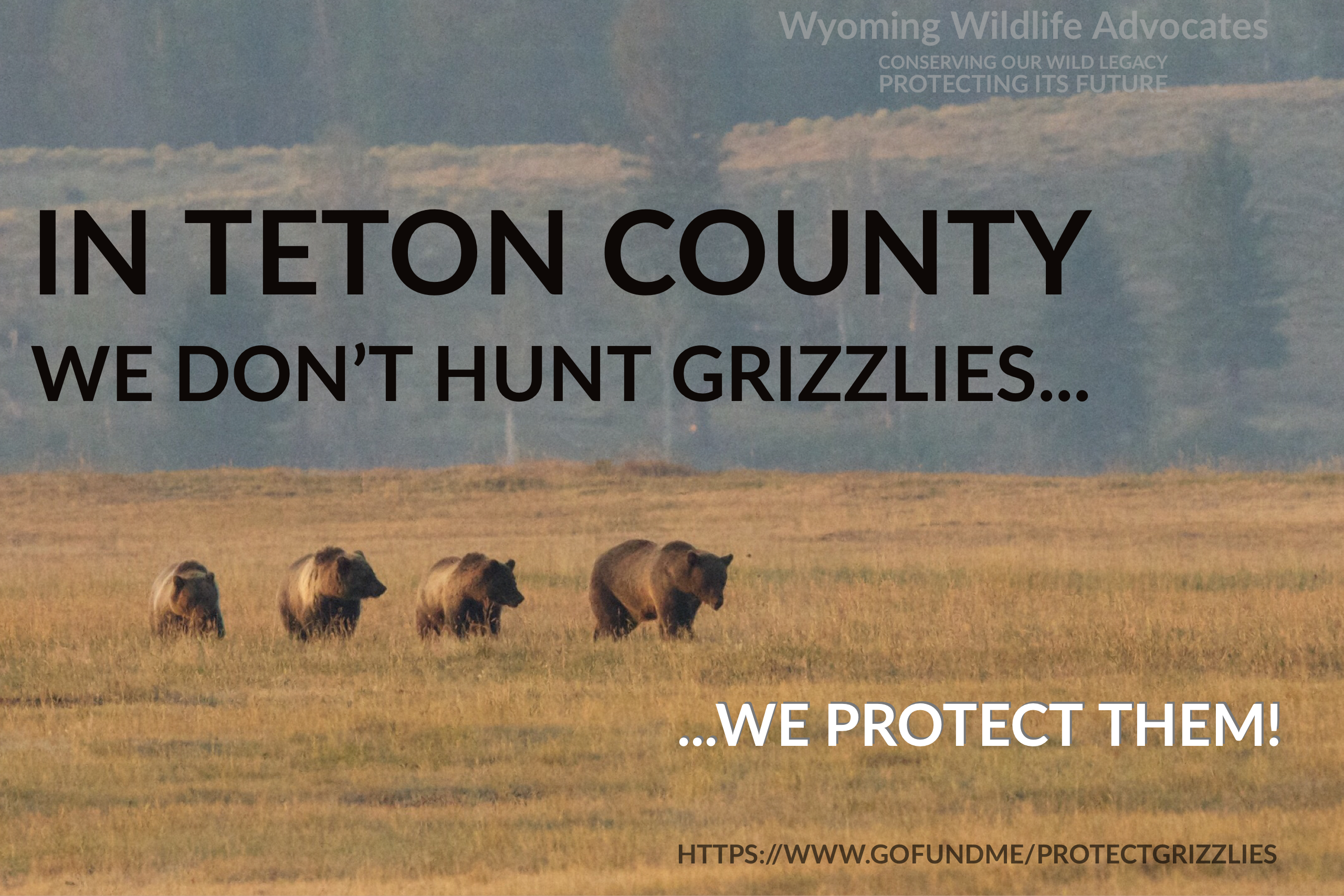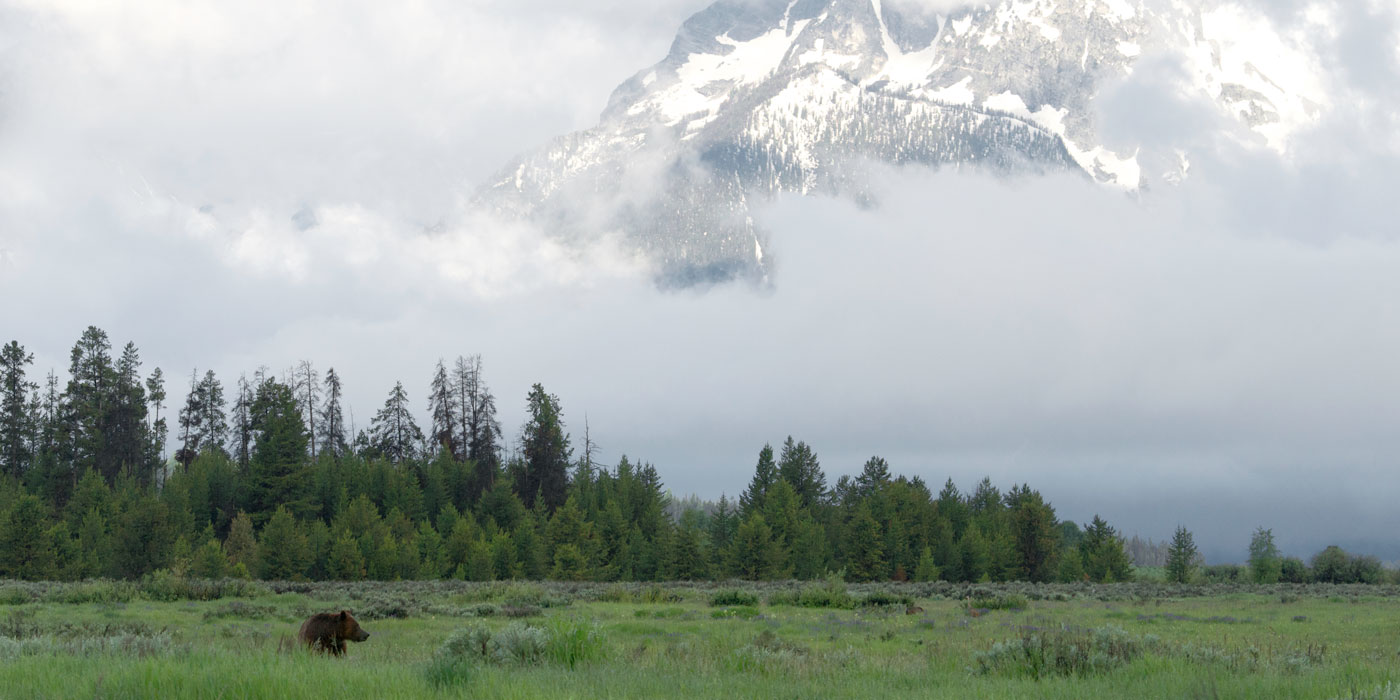JACKSON, Wyo.— Nine conservation organizations sent letters today urging the Wyoming Game and Fish Department and Idaho Department of Fish and Game to require black bear hunters to take a bear identification course before getting a hunting license. Hunters continue to kill grizzlies, claiming they thought they were black bears.
In May a man shot a 530-pound grizzly bear just outside Yellowstone National Park, saying he mistook it for a black bear.
Currently, neither Wyoming nor Idaho requires an identification course or exam. The groups are asking each state to require an identification course to reduce inadvertent grizzly bear deaths.
“The loss of even a single grizzly bear is a tragedy to the recovery of the species as there are fewer than 2,000 bears that occupy a tiny fraction of their historic territory in the lower 48 states,” said Kristin Combs of Wyoming Wildlife Advocates. “If there is something else that can be done to prevent further mortalities of grizzlies, the agencies have an obligation to do so.”
From 2010 to 2022, the Interagency Grizzly Bear Study Team identified 14 grizzly bears in the Greater Yellowstone region that were killed because of mistaken identity, but a total of 113 mortalities remain “under investigation.” Detailed information on these mortalities is not available to the public and the occurrence of grizzly bears being killed by black bear hunters is likely higher than reported.
“Requiring hunters to take an identification course could help with the protection and recovery of grizzly bears in the Greater Yellowstone Ecosystem,” said Kristine Akland, Northern Rockies director at the Center for Biological Diversity. “For now it’s illegal to kill grizzly bears except in self-defense. But I’m deeply concerned by Wyoming’s petition to remove federal protections from grizzly bears in the Yellowstone area and near Glacier National Park.”
“All states in grizzly bear country should mandate that hunters take a bear identification course regularly,” said Bonnie Rice, national wildlife campaign manager for the Sierra Club. “The vast majority of grizzly bears in the Greater Yellowstone ecosystem die from human-related causes. Hunters have a responsibility to be able to properly identify their target at all times before taking that shot, just as states have a responsibility to protect threatened species.”
Montana has a mandatory bear identification course and hunters must pass a test with a score of 80% or higher to receive a black bear hunting license. In contrast, hunters in Idaho and Wyoming can hunt black bears with no knowledge of the differences between black bears and federally protected grizzly bears. States should take all steps in their power to prevent grizzly bear killings, including mandatory bear identification testing for hunters.
“As highly intelligent and a true symbol of the wilderness, grizzly bears need strong protections if they are to survive in the West,” said Wendy Keefover, senior strategist for carnivore protection at the Humane Society of the United States. “The inability of hunters to correctly identify protected grizzly bears has been a deeply troubling and ongoing issue, and one that will only continue to result in dead bears if Wyoming and Idaho don’t require hunter education.”
“All hunters are responsible for knowing their target, but wildlife managers have a heightened obligation when they allow black bear hunting in grizzly country,” said Lizzy Pennock, carnivore coexistence attorney at WildEarth Guardians. “Licensing bear hunters without certifying their ability to differentiate between a grizzly bear and a black bear is simply reckless—Wyoming and Idaho should require this commonsense measure to curtail these senseless deaths.”
###
Wyoming Wildlife Advocates is a non-profit organization focused on informing, educating, and empowering communities to preserve our wild legacy and protect our shared wildlife resources. WWA is the parent organization for Jackson Hole Bear Solutions which offers free and reduced cost resources to reduce human/bear conflicts. Headquartered in Jackson, Wyoming, WWA has thousands of supporters in Wyoming, the Greater Yellowstone Ecosystem, and nationwide.
The Center for Biological Diversity is a national, nonprofit conservation organization with more than 1.7 million members and online activists dedicated to the protection of endangered species and wild places.
WildEarth Guardians is a nonprofit conservation organization with offices in Montana and five other western states with a mission to protect and restore wildlife, wild places, wild rivers and the health of the American West.
Western Watersheds Project is a nonprofit conservation group dedicated to protecting and restoring wildlife and watersheds throughout the American West.
The Sierra Club is America’s largest and most influential grassroots environmental organization, with millions of members and supporters. In addition to protecting every person’s right to get outdoors and access the healing power of nature, the Sierra Club works to promote clean energy, safeguard the health of our communities, protect wildlife, and preserve our remaining wild places through grassroots activism, public education, lobbying, and legal action.
Nimiipuu Protecting the Environment exists to carry on time-honored sustainable environmental practices in the tradition of the Nimiipuu by facilitating and organizing tribal youth and adults in activities for the protection, enhancement, and promotion of mother earth and the Nimiipuu culture.
Friends of the Bitterroot’s mission is to preserve the wildlands and wildlife and to protect the forests and watersheds of our region as we work for a sustainable relationship with the environment.
Since 1987 Friends of the Clearwater has been protecting the public wildlands and rivers in the Clearwater Basin of beautiful North Central Idaho through grassroots organizing, education, advocacy, and when necessary, litigation. We are a 501(c)(3) non-profit organization based in Moscow, Idaho.
Together with millions of supporters, the Humane Society of the United States takes on puppy mills, factory farms, the fur trade, trophy hunting, animal cosmetics testing and other cruel industries. Through our rescue, response and sanctuary work, as well as other direct services, we help thousands of animals in need every year. We fight all forms of animal cruelty to achieve the vision behind our name: a humane society.
Photo: Walt Ackerman





